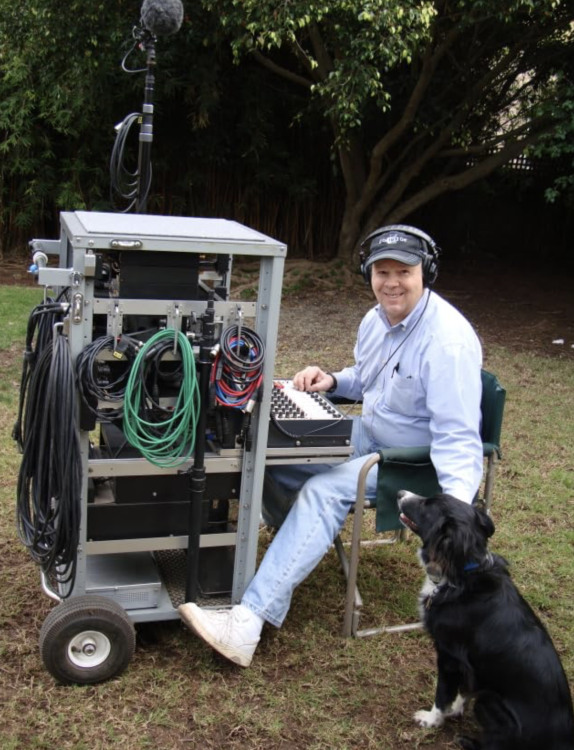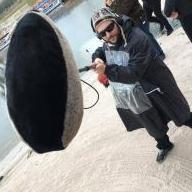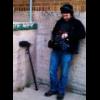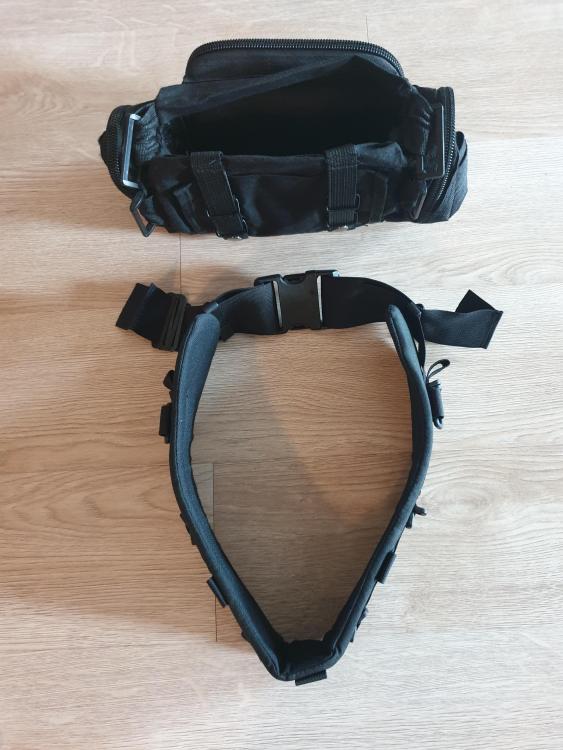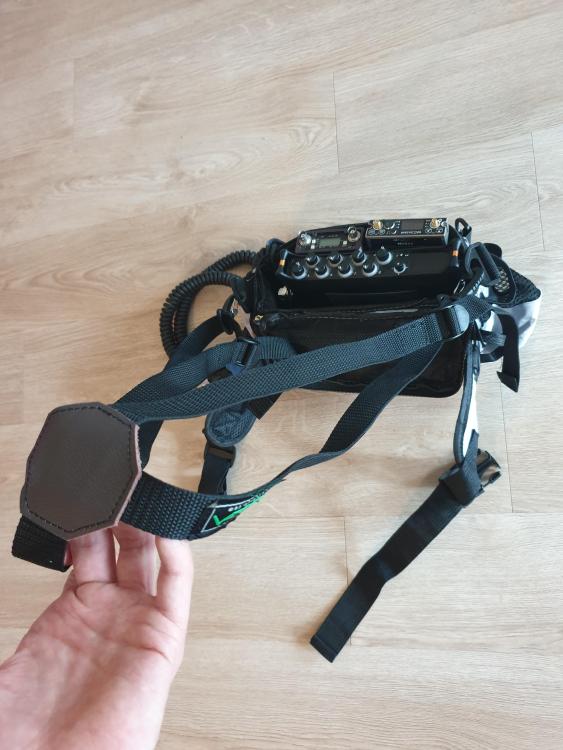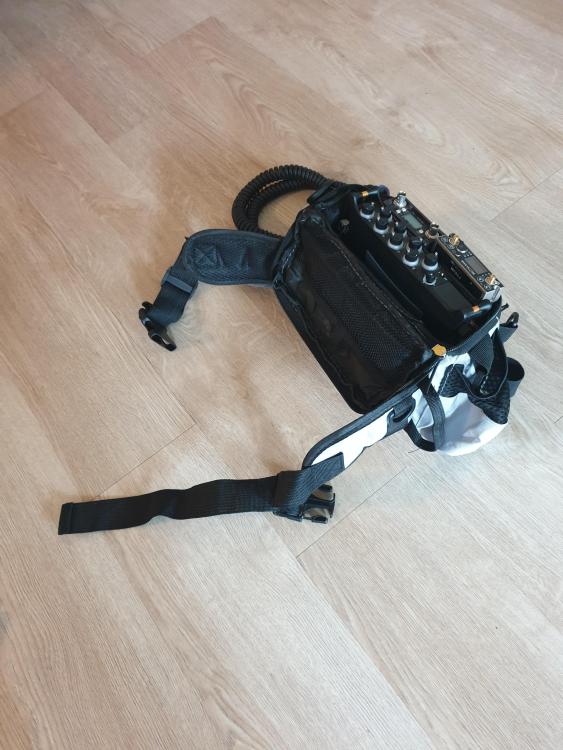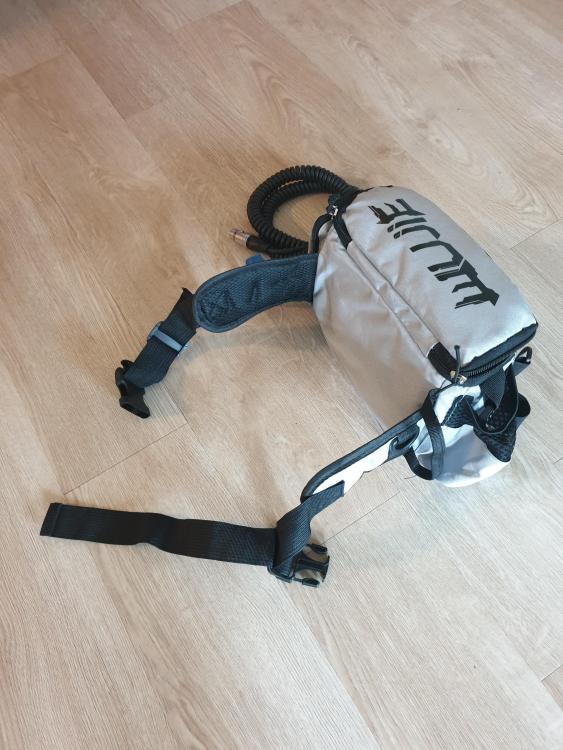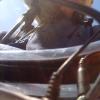Leaderboard
Popular Content
Showing most liked content since 04/17/2024 in all areas
-
I haven't managed to thank everyone personally but the last few days have seen an amazing amount of support donations from our members. Maybe my birthday, April 18th, triggered this, I don't know, but it is so appreciated! We have such a great group of sound people here who participate regularly on site and so many of our veteran members have generously offered so much good advice and help to many of our newer members. It is amazing that we can keep this all going considering how much "competition" there is from so many social media websites. I am aware that the legacy forum format is showing its age a bit but it seems to be still working quite well. So pleased that there is room in your lives for JWSOUNDGRIOUP. Thank you, again, from the bottom of my heart for all the generous support donations.4 likes
-
I'm almost done with a windows version of the app that controls a single 788 via usb. Multiple unit control over USB is limited to basic CLink broadcast commands like roll and cut, but I currently have a way I could hook up the 788's CLink port to a router with a $50 RS232 to ethernet/wifi adapter so it could be discoverable by an iPad/Android Tablet and you could control multiple linked units with it. I don't currently have a Mac to write an iPad app on though. Once the Windows usb app is done, I can post it here as a basic test app for funtionality/bugs before writing the actual iOS/Android versions cause those would take a bit longer since I'd have to learn their platforms a bit more.3 likes
-
I think he means how the Easyrig has rigid hooks that hold the bag, so it is easy to take the bag on and off instead of unclipping 6 carabiners. I have always wanted something like this as well. I have both the Orca and Ktek waist belt and I find both of them super uncomfortable. Even the smallest bag, I found the mixer sat too low and kind of prevented me from being able to walk properly.3 likes
-
I disagree heartily. Not to say that digital mics don't have a place, but you are writing as though the digital parts of the signal never fail. You aren't making the system less complex. You are simply moving the complexity into the microphones and requiring a whole bunch of functionality to be duplicated in every microphone instead of implementing it once in the recorder. That has pros and cons, and your post only really lists the pros. Pros: Shorter analogue path means less susceptibility to analogue distortions. Duplication of input signal circuitry provides redundancy: If it fails, only one microphone has failed, not the recorder. Less analogue circuitry in the recorder means less weight and power consumption in the recorder. Cons: Removes compatibility with analogue microphones and other devices and / or requires outboard pre-amps and A/D converters for every analogue device I need. Increases weight and power consumption in every microphone (meaning: a heavier boom and way less battery life for the boom Tx). Makes troubleshooting slower and more difficult because now there are more places where settings can be misconfigured, and more points of failure in the microphone. Using a wireless Tx for the boom introduces all the reliability issues of a wireless transmitter ... sure it's digital, but that doesn't avoid interference, drop-outs and battery issues. Longer digital path means more ways for digital transmission to go wrong. Practically speaking your approach locks you into a single microphone vendor. Schoeps is great, but it's not the correct choice in every situation. I want to be able to use specialized instrument mics, hydrophones, geophones, exotic pre-amps, and all the $100K+ of analogue accessories in my existing sound kit. I want to know I can easily patch into a house sound system, or plug in a microphone that someone has handed me as their "favourite mic". The CMD42 requires an order of magnitude more power than a phantom microphone. That means worse battery management for boom transmitters, or a significant increase in recorder power consumption if hardwired. I get less than 2 hours of runtime on my TRX745 when powering my AES42 SuperCMIT. That can work for a dramatic show where I have a boom op to baby-sit it, but it wouldn't work for long interviews. Your approach doesn't reduce power consumption for the whole system, it just moves it around. In my opinion, focussing on gear and signal-chain as a path to better audio only goes so far. In day-to-day operation, simplicity, resistance to user error, and ease-of-workflow have a greater effect on audio quality than keeping the analogue path as short as possible. The change you are suggesting trades workflow advantages for signal-chain advantages that are mostly minor or theoretical. These are the workflow disadvantages that I see: Eliminating analogue inputs hugely restricts my workflow by limiting which tools I can use. Access to the right tool for the situation is hugely important for keeping workflows simple. Pushing input processing into the microphone means I no longer have instant access to those settings in the recorder. I can't instantly see what settings are enabled, and to change them, I have to pull out a phone and get physically close to the mic (because settings are changed by dweedle tones). Yes, there are circumstances where the input processing really does need to be very early in the chain, but 95% of the time it doesn't matter and its easier, quicker, and more reliable to make the change at the recorder. Using a boom transmitter means another devices to manage batteries for, and the high power consumption of the CMD42 means I need to track this fairly closely. I can't just change batteries once a day at lunch. I can see a place for a recorder with all-digital inputs for simple jobs (say, an interview kit) where I could bring a single-purpose kit and know that the job will fit within the confines of that single purpose. But it couldn't be my only recorder ... I need a recorder with analogue inputs for a general purpose kit because of the flexibility it gives me. Maybe that will change in the future. If enough other manufacturers adopt digital, I'd feel less need to rely on analogue gear. If the recorder (in conjunction with the boom Tx) implements the AES control protocols well enough that I don't need to whip out my phone to adjust settings in the microphone, that would address my concern about putting those settings there. Maybe other manufacturers will produce digital PSUs that are less power hungry and the concerns about battery life go away. But right now, with the equipment and workflows that are available, I see far more downsides than upsides.2 likes
-
Sometimes I wonder how long this site will be active, and thank my lucky stars that I was able to get in early! Despite the like button, this is one of the greatest (and only) places I visit online. Thank you Jeff and thank you donators!2 likes
-
2 likes
-
I can't say enough good things about TXAdvance. I have been using it for 2 years. It is instrumental in scanning and finding clear frequencies, coordinating my 8 wireless transmitters and troubleshooting RF hits in LIVE active mode when some new RF source walks onto set. I have used several RF apps before using this one. For a location sound mixer there is simply no better product. I know several Apple device users who have purchased Android tablets just to use TXAdvance. Plus Grégoire is very responsive to feature suggestions. I highly recommend his app. In its current version it is very mature and feature packed.2 likes
-
My thoughts on Schoeps CMD42 and why Zaxcom Nova “oneunit” is too heavy! 🙂 I am very excited about the Schoeps CMD42 AES42 digital amp. I have been using schoeps exclusively for 6+. Ever since my sennheiser MZD8000 digital AES42 amp died. I was using a digital mic preamp for a long time as well before my MZD8000 died. There is multiple advantages of using AES42. In my opinion the sooner the signal chain becomes digital the better for the sound quality and reliability. Aes42 is IMHO the right approach. No need for analog cable runs ,analog front end pres and Analog to digital converter. No more power and RF interference, buzz, crackle, ground loops. 21st century insulation. No more analog artifacts. A lot of my work is multiple setup interviews in Las vegas hotels. It is one hotel room for multiple setups/angles. You setup one, do the interview and than move around the cameras and light for every other user. Using a wireless for boom speeds up the setup and avoid power lines and potential interference. It also sounded a lot more defined. Using digital wireless from a digital microphone kept me for worrying about potential problems. Working in sports arenas is similar. The only point of failure in a pure AES42 microphone is the capsule and the millimeter behind it. Everything else is 100% . The CMD42 is a great tool. Apart from all the advantages of AES42 mentioned above “, superior shielding, reliability and sound quality” the CMD42 has the flexibility of 2 independent channels and most importantly variable Low Cut and pad. I like the pad to also be at the mic capsule and not at the analog front end of the recorder. In fact I want everything to happen right next to the capsule and than flow digitally out of there… There are special digital filters for different capsules. Filters for low frequency loss in directional capsules.The filters for close proximity comb filtering turn the capsules in to P “proximity capsules”. For free. Freaking amazing. There are filters for OMNI and Ribbon “which I will never use” but the filter for parabolic dish seams promising. And I can only assume what the capsule correction for capsules with memory does for us… Capsules with memory???? I was purchasing a cut60 but it was out of stock. I got lucky. Now the money can be used towards a CMD42 giving me “Cell Phone controllable” variable low cut/pad and filters. Considering how expansive SCHOEPS accessories are the CMD42 gives me over a thousand dollars in accessories and thousands of dollars in proximity P capsule filters. Now about the potential advantages with recorders……. Back in the day I removed the analog preamps “among other things” from Nomad to make space for the mix pre II antenna distribution, internal battery and to make the recorder lighter, simpler and have permanent RF,power and AES3 connections. OneUnit design. No more cables failures and interference. The buster father of Zaxcom Nova OneUnit. The only reason I was able to achieve that is using mkh8040 and mkh8060 microphones with the AES42 directly in to Nomad. Eliminating the ancient analog front end and AD converters simplifies the design and cuts a lot of the cost and weight. Also analog front ends fail and get out of calibration. AES42 is superior. Far superior. Now we have CMD42 and Zaxcom can make a simple/lighter recorder “like my Nomad one Unit” by removing all analog front end limiting the outputs to 2 simple channels outs TA5 and 2 simple analog mic/line ins TA5 inputs for the rare times i need to feed something in analog. Why????? Better reliability, lower power usage and lighter weight. Also cost is cheaper. Yes Nova Oneunit is too heavy! 🙂 It has 4 more mic pres than what I need. and 6 more power outputs. Make it simpler and lighter. Call it Zaxcom Nova lite. My back is too tired wearing 5 pounds all in one unit bags. I want 4 pounds. 🙂1 like
-
Alright so I went with the Ktek standard sized stingray harness. So far it seems great! My old Petrol bag isn't the most ideal bag to use with it, because it doesn't have hooks on the upper corners against the body, but it does have two sets of hooks so I think it will work. I am thinking I should install some hooks on those corners. Maybe just some steel loops or something bolted there. I've got a job starting Thursday where I'll be running and gunning so that'll be the true test. Most of the weight lands where my lower back connects to the waist. I don't really feel it on my shoulders too much. I really appreciate the design of the carabiners, the fact that they have the little nib on the big curved part instead of the straight part. It's actually much easier than the Petrol harness. Also I quite like the six points of attachment. It is a bit of a process to connect, but there is that "shortcut" of leaving one side fully attached. The standard size fits great, but yes most of the straps are pulled out a bunch. I did raise the spine part to the topmost position. I will say that the chopped up kids shin pads really did the trick on that old Versaflex! I wore that and walked around for a couple hours without rest yesterday with that set up, and my shoulders and back feel totally fine. I did not have to do any overhead booming, which is good because then those pads would have pushed into my shoulders. Right now the bag is sitting at 26 pounds, but with all the stuff in it it is more like 35 pounds. I just don't do enough of these small bag jobs to justify purchasing a whole smaller rig. I do have a Nomad but it is installed in the big cart as a back up deck. I suppose I could pull it out; I do have a smaller bag for it. But I would (always, every time and forevermore) much rather use the Deva so I'm gonna "big bag" it as long as my body holds out! That beefy Portabrace would have likely been the best candidate. I like the look of the Portabrace way more than the too-colorful Orca. (Sadly the timing was bad to get Jim's Petrol.) Thank you everyone for your replies!1 like
-
Thanks for the suggestions. The decision was made for me and the book is Sound Design for Moving Image by Kahra Scott. Not my first choice but I will try to make the most of it.1 like
-
It’s worth noting that Storacell, the maker of the tubular battery caddies, listened to feedback about tearing the labels off rechargeables and now offer a magnetic caddie that doesn’t tear the labels. I haven’t tried it but someone should. https://storacell.net/collections/magnetic-caddies-1/products/magnetic-aa-8-pack?_pos=1&_fid=183dd515f&_ss=c1 like
-
I don’t love the plastic tubular ones anymore. Sometimes they tear the battery covers and they don’t hold enough cells. These plastic boxes are actually free at Home Depot if you buy 48 disposables. You can also buy empty ones on Amazon. I much prefer them and it’s very clear where your live/dead cells are.1 like
-
My thoughts exactly; as soon as I saw it being used, it seems much better than dual arm or other system that rely on clamps, or even battery power to work. Seems very intuitive, has the option to park the pole. The only improvement would be not to require a second person to adjust tension on the fly; but people are used to helping out with Easyrigs - but the control being on the side somehow would make it much better when doing doc work or other one man band setups.1 like
-
Yes that one looks awesome, similar to the Orca. Have you tried that one? The Portabrace AH-3HD looks pretty dang awesome. And it's significantly lower in cost. I must say I'm super intrigued by the KTek invention, but that Portabrace does look like a great alternative to the Petrol.1 like
-
The one piece of kit I refuse to sell is my Porta-Brace AH-3H-MEMS with very thick memory foam padding, waist belt, and shoulder straps (even though I almost never use it because I rarely ever solo or run and gun and if I do it's a really small kit that can fit on a waist belt) -- They cost around $300-$400. Not sure if it's still available on the market or not but there is a product page on Markertek still. But the straps have enough cushion material to hug you.1 like
-
Dude! Yes please! I'm PMing my email. I'd love to see if it's the same one, it had wide shoulders. Wider than 4" I think. I just went to the sporting goods store and purchased some boxing shin pads to put on my shoulders for the next few days. I totally need a proper harness. I wish I knew what happened to my old one, it's one of those mysteries.1 like
-
Maybe theese pictures can be of inspiration for someone. I tried a bit of waist rigs. The military style deputy bag that a lot of us rocked had a removable strap. I used it for some time, and was nice to not have any strain on the shoulders, but the bag also made a funny shape and not so fit, plus it felt kind of too narrow in the back so you had to lower it to get appropiate support. I ended up getting a thicker waistbelt from Kinesis, but I havent used it much as I found a proper harness with boomhanger to help in docu style work. The way it was attached was simply by using the same loops. A more flexible way would be to use carbiners/frog hooks. The last experimental aliexpress bag (thanks Rado for your search of the perfect bag) is like an oversized fannypack, it sits better than the deputy bag, but also the waistbelt becomes a bit too narrow on its own to support all the weight. I found a good compromise was a leightweight strut harness that I had laying around. Maybe some fabric to thicken the belt a bit would also be an idea. Still on the search for the perfect fit, the main problem with just a belt is how to get it to be firmly in pöace and not too low down in my opinion.1 like
-
I loooooooooove my lightweight mixpre/waist belt rig. But it is "heavily" dependent on the weight of the bag. A 633 kit is pushing what I would want to waist mount. My Mixpre10T II bag is just the mixpre, 2 dual RXs, a G4 tx, and 1 NP1 battery. It's a dream not having it hang from my shoulders. But I don't use it much given the limitations of the setup, but it's clutch for when it works. My experience is with the Orca waist belt, I've not used the Ktek one.1 like
-
Yeah you read that right. The part of the mixer bag hooks on the EasyRig made me revisist an idea I sent to K-tek (even EasyRig actually..hmmm) a decade ago where the general idea was a rigid waist belt with some way to hang the bag on, instead of having to clip carabiners or whatever. The idea came from me having a child that refused to be carried in any other way than on the stomach, like a Babybjörn, and I really enjoyed the satisfying feeling of attaching those hooks, so I kinda wished those hooks were on sound equipment, but I guess those hooks are super patented. Anyway, waist belts work better for me, I'm tall (6.4 feet) and skinny, so no harness has ever suited me. Small bag or not, I've always preferred having a girdle like thing on my waist to hold the bag. I can see a product from any company with this idea for a waist belt: sturdy, nice supporting belt with just that very simple hook design, the bag itself doesn't really need securing unless you know you're gonna be running frantically all day. Maybe EasyRig can create a harness that you could actually take apart, so one part is the actual boom rig and the other is the belt with the hooks. I dunno... I can dream. And most of the times I think that people using that EasyRig contraption will be taking it on and off depending on space issues. And if you're on a scripted shoot you'd have a dedicated boom operator who wouldn't also carry the bag while booming... On reality shows, sure, you could be booming and mixing, but not likely all day with an easyrig. Not even camera operators use an EasyRig for every single shot. It depends. Hah.1 like
-
I'm using the lighter version of the Orca belt (OR-37). I sometimes do small shoots with only a MixPre-6 and some TXs so there's no need for any shoulder strap and I love it. Even with small mixers on my shoulders my neck tends to strain after a long day of booming, which never happens when booming without a mixer bag. Feels way better with only a waist strap and I don't feel like the position of the bag is affecting my movement a lot. But that's a really light bag of course. It's something different with the 788/CL-8/PSC SixPack setup that usually lives on the cart. When I have to use it only in the bag I take a combination of the Orca waist belt and a Portabrace shoulder strap (the one with the crossed straps). It could somehow work with only the waist belt but it doesn't feel right and I'd have to pull the straps tight again every other minute. On the other hand the waist belt really makes a huge difference on my shoulders as compared to only the shoulder straps and I sometimes just take the weight off my shoulders and let the bag rest on the waist belt when there are short breakes. I also like the form factor of waist belt and shoulder strap when being packed away so it's much less space than always bringing a full harness on set even though I might only need it on 1 out of 20 days. I think it's worth giving it a try. Your setup is probably lighter than my 788 bag and the heavier version of the Orca belt might also be suited better. It's anyway a matter of taste but since I tried the waist belt I'm always going for shoulder-free if possible, especially doing doc-stuff with booming at the same time.1 like
-
Hey @The Documentary Sound Guy, a reasonable query. My query in this case is in relation to the M2D2's place in the workflow of a radio journalist, where its proves handy on reporting trips, first in field and later in the edit and tracking. While certainly a question of technique and approach, in the field a devices small profile can assist in easing the casual nature of the moment as the source/interviewee speaks with the reporter, it's small size being a unique advantage over mixer/recorders like the Nagra 7/Mixpre/ etc. Though like both those units, when returning after a day in the field, the M2D2 has the benefit of doubling as the audio interface during the edit, tracking, and playback. As for what a field reporter might couple the M2D2 with. While using your phone in the field make sense in theory (Sonosax pitched this for journalists), there are times you are recording both ends of a sudden phone call (using both of the M2D2's inputs, recording into....?) or when you need your phone handy for incoming messages (say during a satellite two-way). That said, totally, a spare phone just for the M2D2 is an option, though seems like there'd be a simpler option? Which brings me back to Lectro's SPDR, which seems most fitting in this context (albeit pricier than a spare phone). Which is why I wondered wonder if there were any comparable alternative low profile recorders to pair with the M2D2 that maybe centered around USB or AES (such as TE's TP-7, although designed for a very different audience). But hey maybe an extra phone is the convenient option. Good to have a spare.1 like
-
There's always the Nagra Seven. Which also doubles up functionality, but at least its preamps are better than a Zoom. I'm not totally sure what you mean by USB-centred audio recorder. You mean a recorder that accepts a USB interface as an input? I don't think it exists ... there's no reason to make one when a phone or a laptop can do the job just as easily (with no difference in quality, and probably a minimal difference in convenience). If your audio signal is already on a USB bus, a laptop is the correct tool for the job. Outside of that, I assume the main reason to use the M2D2 is for its preamps, so if you want to use the analogue or AES outputs on the M2D2, any of the usual recorders should work just fine, Zoom, Mixpre, or a top-tier production recorder. I guess I'm really not clear why you want a special recorder just for the M2D2. If you just want the Sonosax pre-amps, plug it into whatever recorder you have. If you want to use the USB output, plug it into a laptop or phone. And if you want a recorder with pre-amps, get a decent recorder and don't use the M2D2 at all. If you really want Sonosax pre-amps with an integrated recorder ... sell the M2D2 and buy an SX-R4+.1 like
-
50 rounds, err um, AA's or AAA's worth of storage for $5 bucks. I put a little foam on the lid underneath as AA's/AAA's are a tiny bit shorter than ammo so they would go up and down if rattled in the case but used something like this for the last 10 years with no issues. Also almost exactly the size of my 150wh V-Mount backup battery that I keep in a pelican case so I stack them on top of each other nicely in the pelican in a divided slot.1 like
-
An additional question: Were you ok with having the bag low on your body? I prefer having the bag at chest level; I find it is easier on my back. But I'm curious how a belt rig would change the weight distribution.1 like
-
If I attached my Easyrig Minimax, which supports up to 7kg (15.4lb), to a mixer bag instead of a camera the bag would feel almost weightless. I’d be able to guide the bag with a couple of fingers. The Easyrig for boom poles is designed differently, but Hellsten appears to be saying that it has a positive effect on the apparent weight of a mixer bag.1 like
-
I just liked the way the mixer bag hung off of the hooks. Imagine a thick belt or girdle you wear around your hips, and you'd hang the bag on that instead of having straps over your shoulders, so no harness per se. I don't know if it'd actually work but it seems like a nice solution. I think I'd buy it1 like
-
I'd advise against putting anything at the 180 degree spot/ back of the microphone, especially a bucket which is a very non-linear sound collector of sorts, especially when agitated with wind. The common misconception is that directional mics have a null at 180 degrees or various other angles , depending on the polar pattern. In practice microphones, especially shotgun microphones hardly ever have textbook patterns across the entire frequency range. Schoeps is probably the best at achieving as close as possible a textbook pattern but one quick look at the graph of the MiniCmit shows that at lower frequencies you have a significant rear lobe, meaning that this mic hears a lot of what's going on in the lower mids and bass behind the mic . 500 Hz is only down 8 dB and 250 Hz is only down 7 dB from its on-axis response. It is very important to consider what is happening "behind" the mic.1 like
-
We tried an earlier proto on a 17 page backwards walk and talk, it was great for that1 like
-
1 like
-
From my experience withe the CSS-5 in the mono shotgun mode it's a wide cardioide with no reach and very handling sensitive. For 5.1 work I bought I bought a Soundfield SPS-200 In post you can adjust many things using their plug-in software mike sps200-manual.pdf1 like

.png.279748a58a2b862b7aa5f3b84126e232.png)




